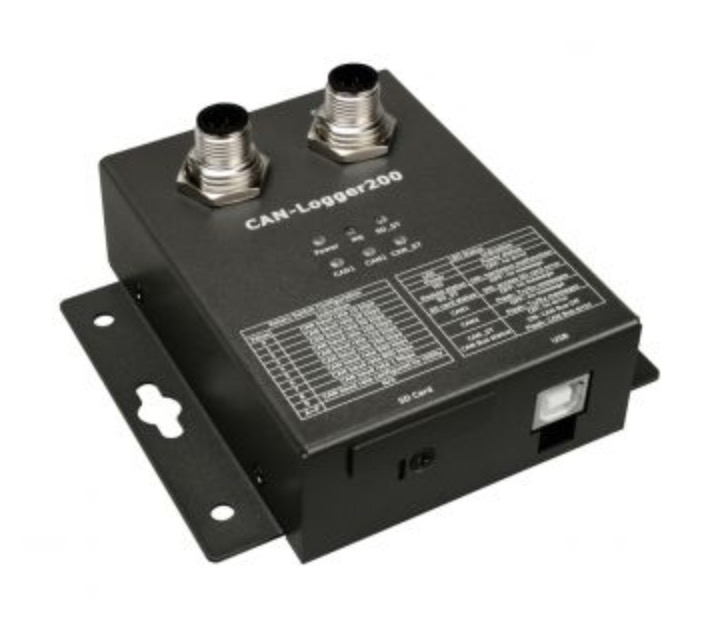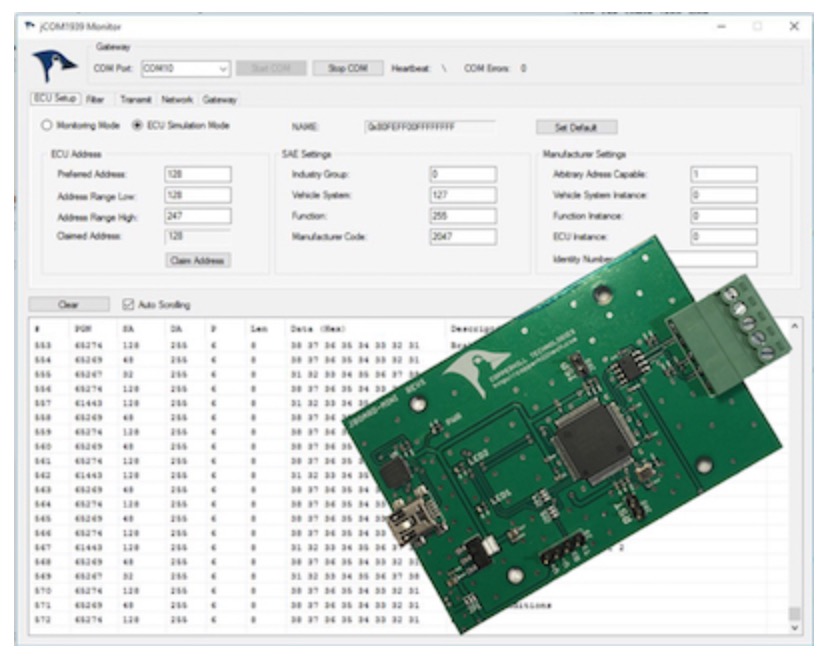Recent Posts
Intelligent CAN Bus Data Logger Device With Two CAN Bus Ports
Posted by on
The CAN-Logger200 from ICPDAS is equipped with two M12-designed CAN Bus interfaces and an exchangeable SD card for temporary data storage.
A DIP (dual in-line package) switch activates/deactivates the integrated 120 Ohm termination resistor. The user can individually set the CAN Bus bitrate (up to 1 Mbit/s), the CAN Bus protocol (11‑bit identifier base frame format or 29‑bit identifier extended frame format), and the CAN Bus silent mode of the data-logger for each interface separately. The programmable recording filter allows the configuration options for receiving, filtering, and storing CAN Bus messages. Using a powerful processor, the device can receive up to 150 000 messages per second with a timestamp (10 μs clocking).
The storage capacity of the 32‑GiB SD (secure digital) card supports recordings over an extended period. The data can be transferred to a PC via SD-card or directly via USB for further analysis. Software drivers for several Windows versions are available.
Features
- CAN Bus analysis and diagnosis
- Two CAN Bus interfaces 5-Pin male M12
- 32 GB SDHC card
- Supports CAN bus acceptance filter configuration
- USB 2.0 High Speed Compatibility
SAE J1939 ECU Simulator Board With USB Port
The jCOM.J1939.USB gateway board is a high-performance, low-latency vehicle network adapter for SAE J1939 applications. It allows any host device with a USB COM port to monitor SAE J1939 data traffic and communicate with the SAE J1939 vehicle network.
The board supports the full SAE J1939 protocol according to J1939/81 Network Management (Address Claiming) and J1939/21 Transport Protocol (TP). It is also supported by an extensive programming interface for Windows and Linux/Ubuntu applications, including full C/C++/C# source code for short time-to-market developments.
The strength of the board lies in the fact that the entire SAE J1939 protocol, including all timing requirements, is stored on-chip, thus taking the burden off the main system. The board uses a USB COM port to communicate with the main system, i.e. all data transfer is handled through a standard COM port access.
The communication protocol between the board and the main system is well documented and thus allows a porting to any computer system with a USB connection. Working source code libraries exist for Windows (C# under Visual Studio 2012/2013), Linux and its derivatives (C++ using Code::Blocks), and Raspberry Pi (C using the standard gcc compiler).
 Loading... Please wait...
Loading... Please wait...


